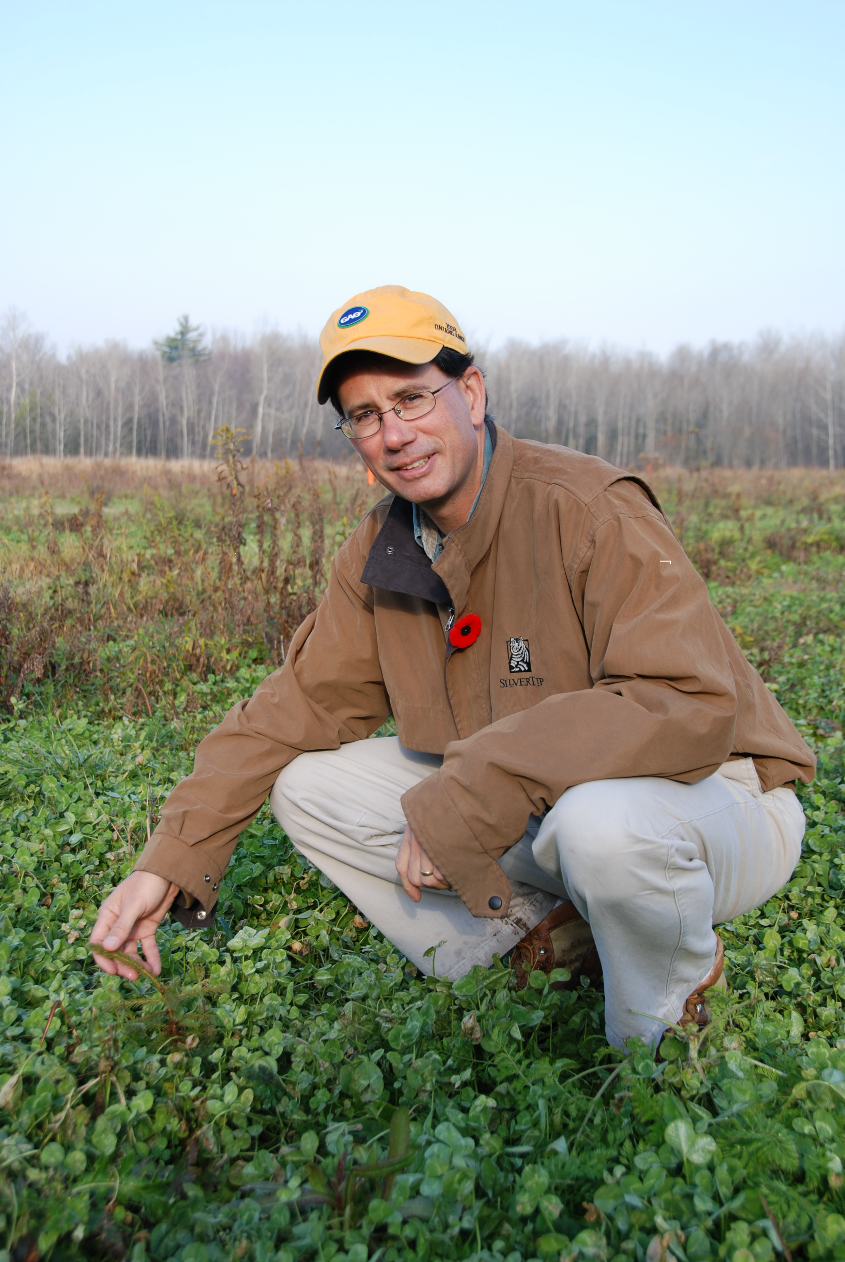Quel est le coût d'un incendie de forêt ?
Faire progresser la modélisation du climat
À la fin de l'été 2023, le Canada avait perdu un nombre record de 13,7 millions d'hectares de terres à cause des incendies de forêt. Dan McKenney et Emily Hope, du Service canadien des forêts, expliquent comment les données C1W permettent de faire la lumière sur les coûts réels des incendies de forêt et d'élaborer de nouvelles approches de gestion des incendies.
DES YEUX DANS LE CIEL PENDANT LES PICS DE COMBUSTION - WildFireSat comblera un "manque de visibilité" vital laissé par les satellites actuels. Comme le décrit le site web de l'Agence spatiale canadienne, "[les] barres colorées montrent les temps de passage de divers satellites existants utilisés pour la gestion des incendies de forêt : Terra (vert foncé), Aqua (bleu), Suomi NPP (violet), Sentinel-3 (vert clair), Sentinel-2 (orange) et Landsat 8 (rose). WildFireSat vise à combler une lacune cruciale dans la surveillance des incendies de forêt en période de pointe et à être utilisé en conjonction avec les systèmes existants".
Source de l'image : Agence spatiale canadienneCette image est basée sur un graphique développé pour un article de la revue, Capteurs.
Q : POUVEZ-VOUS COMMENCER PAR DONNER UN BREF APERÇU DU PROJET SUR LEQUEL VOUS AVEZ TRAVAILLÉ ?
Dan McKenney: En début d'année, le gouvernement du Canada a annoncé la mission WildFireSat. Il s'agit d'un réseau de satellites qui fournira des données en temps quasi réel sur les incendies de forêt dans tout le pays - depuis l'espace - à partir de 2029. En tant qu'économistes, Emily et moi sommes en train de faire des calculs pour quantifier les pertes que WildFireSat pourrait aider à éviter.
Emily Hope: Nous nous intéressons à des éléments tels que les coûts d'évacuation, les dommages causés aux infrastructures et aux biens, les pertes de bois, les coûts de santé, les coûts de suppression et même les indemnités d'assurance. Si nous pouvions obtenir les données, il serait fantastique de connaître les effets en aval sur les entreprises, tels que les fermetures, ainsi que les effets distributifs, tels que l'impact sur les revenus.
Dan: Il y a aussi les services écosystémiques et l'impact sur le carbone. Le carbone a aujourd'hui une valeur importante pour la société et les arbres stockent le carbone, de sorte que les incendies de forêt entraînent une perte de séquestration.
Q : COMMENT CELA S'ARTICULE-T-IL AVEC CANADA1WATER ?
Emily: Dans le cadre de notre analyse, nous étudions également l'impact des incendies de forêt sur la qualité de l'eau. Quelles sont les conséquences possibles pour les municipalités qui dépendent des eaux souterraines ? Qu'advient-il de l'eau potable ? Nous travaillons avec un étudiant en maîtrise du département d'économie de l'alimentation, de l'agriculture et des ressources de l'université de Guelph pour quantifier les impacts et déterminer comment les satellites pourraient améliorer l'analyse.
Dan: Canada1Water a examiné les défis posés par le changement climatique. Notre analyse coûts-avantages doit prendre en compte le changement climatique. Les données de C1W sur le changement climatique seront donc très utiles.
"Il est très important de comprendre les aspects économiques des incendies de forêt.Il est évident que nous voulons sauver des vies, mais nous voulons aussi éviter que les gens perdent leur maison. Nous devons savoir combien ces incendies coûtent à notre société".
Q : DANS QUELLE MESURE COMPRENONS-NOUS LES CORRÉLATIONS ENTRE LE CHANGEMENT CLIMATIQUE ET LES INCENDIES DE FORÊT ?
Dan: On sait depuis longtemps que le changement climatique prolongera les saisons des incendies et rendra plus probables les longues périodes de sécheresse. Cette année, nous avons également vu des incendies d'un bout à l'autre du Canada, ce qui est très inhabituel. Tout cela pose des défis aux agences provinciales et territoriales de gestion des feux de forêt. Le travail effectué par Canada1Water nous permettra d'examiner la force des corrélations entre le climat et les incendies à des échelles spatiales plus larges. La modélisation peut amener les gens à réfléchir aux niveaux de gestion et de suppression nécessaires, aux impacts sur la gestion de l'eau et à la façon dont la gestion forestière peut aider.
Q : QU'ESPÉREZ-VOUS DE VOTRE TRAVAIL ?
Emily : Il est très important de comprendre les aspects économiques des incendies de forêt. Bien sûr, nous voulons sauver des vies, mais nous voulons aussi éviter que les gens ne perdent leur maison. Nous devons savoir combien ces incendies coûtent à notre société.
Dan : Nous espérons que notre travail suscitera une réflexion plus approfondie sur la gestion des incendies et les ressources à long terme, c'est-à-dire sur la quantité d'efforts à investir dans la gestion des incendies dans le paysage. Ce ne sont pas des questions faciles, surtout dans une année comme celle-ci.
Emily : La mission initiale de WildFireSat a une durée de cinq ans. Si nous parvenons à en démontrer les avantages, nous disposerons d'une analyse de rentabilité pour la prolonger. Nous visons le Canada, mais d'autres pays ont également des problèmes avec les satellites géostationnaires actuels. Il y a donc peut-être des possibilités de partenariats internationaux et d'un réseau mondial de satellites de lutte contre les incendies de forêt.
Dan McKenney est chercheur et chef d'équipe au Centre de foresterie des Grands Lacs du Service canadien des forêts.
Emily Hope est économiste spécialiste des ressources forestières au Centre.




